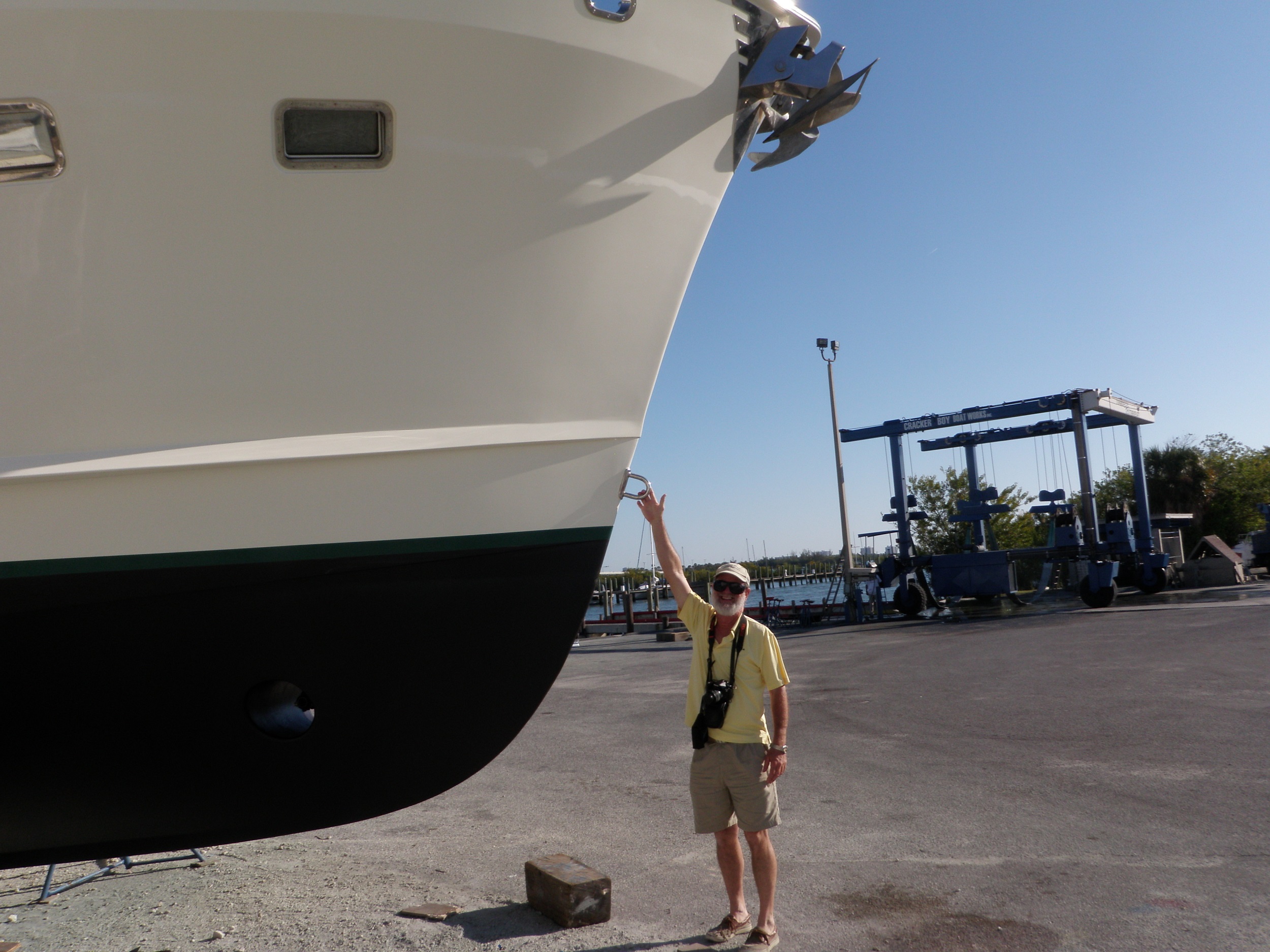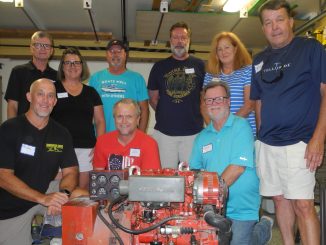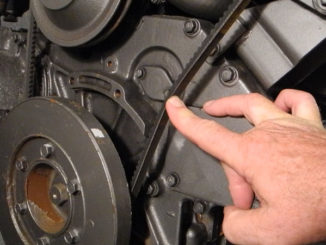
Anchoring from a high bow boat has its moments, moments aside from what the rest of us experience each time we drop- um – lower the hook. If you think being ten feet above the water only means adding ten feet to your scope equation then you might want to think again…or just read on for some successful steps. Yes, anchoring from a high bow boat can be a challenge. So Ask Captain Chris about anchoring tips for a great night’s sleep at anchor. We’ll even help you through the awkward mooring line retrieval from the seemingly skyscraper heights of a high bow.
Sleeping Safely
To sleep safely at night while anchored you do not want the anchor to drag. Add a wind or tide change and you are almost guaranteed that the anchor will also change direction. It may pivot and hopefully reset. Hopefully.
Please understand that there are many key elements which can make a captain comfortable when sleeping on the hook. Proper anchor type for the sea floor conditions is the first and most obvious decision. Mud, sand or rock bottoms call for different anchor designs. Too many of us use the anchor that came with the boat. The boat dealer put it there so it must be the right anchor, right? Wrong.
Our second decision is where to anchor. We must consider weather conditions, wind or waves, jets skis or salsa music. Depending upon our mood and mindset we may prefer a peaceful night in a remote location.
And our third decision is how much scope. Scope is the length of rode of the anchor line in relation to the height from the bow roller to the sea floor. Scope sets the angle of the rode. Rode is the length of the chain, rope or combination of both that connects the anchor to the boat at the bitter end. And the bitter end is where the anchor rode connects to the boat so you don’t lose your anchor. Lots of new terms to share with a new boater and a bit of review for the rest of us.
Each of these decisions effect how well our anchors hold and therefore, how well we sleep. Now we need to ask, just how do you manage all this from the high bow of a cruising boat?
Why Height Matters
Lots of questions already, so now let’s get to some of the answers and why height matters. Standard procedure for anchoring is to determine and then locate your ideal anchorage. Approach the anchor spot into the dominant force, either wind or current. Keep in mind your swinging radius. Again here we are thinking about that high bow pulpit.
The scope formula for a traditional rode is 7 times the distance from the bow roller to the sea floor at high tide. The boat’s high bow becomes a concern when making your rode much longer and thus your swinging radius much greater. Beware that you don’t swing and kiss a neighboring boat or worse yet, ground your boat during a low tide change. This really becomes an issue when in 7 or 8 foot tidal areas like Georgia or the Carolinas.
Simple Math
Let’s do the math. It really doesn’t need to be complicated so we will share an example. Start with water depth of 10 feet and a scope of 7 for overnight comfort. That means you need to deploy 70 feet of rode. But wait! The bow is 10 feet above the water so we need to add another 10 feet to the formula which means we now have to consider 10’ of depth plus 10’ of air space equals 20 feet. Multiply 20 feet times our 7 scope to equal 140 feet of rode. But wait! There’s more!
What if you are in Georgia with a 7 foot tide? Now you must consider the highest tide for scope purposes and the extended swinging radius while at low tide. So add another 7 feet to your scope formula if you anchored at low tide. Your new calculation now includes 10’ depth +10’ air space +7’ tidal range. This is now 27 feet x 7 scope equaling 189 feet of rode deployed. Whew!
No worries say you? Hmmm. When that summer squall season comes around, we like to go with a 10 scope or more. A longer rode means a better scope (lesser angle of the rode which prevents the anchor from popping out of the sea floor). Now we require up to 270 feet of anchor rode. Even if you have that much rode aboard, you should consider available swing radius with almost 300 feet of anchor rode deployed. When in a popular crowded anchorage or a narrow creek you often will not have that much room to swing comfortably.
So if every boat swings the same then we all dance in the same direction…right? Not exactly. This high bow boat has so much windage on the high hull and higher house that wind affects the boat’s position at anchor far more than tidal current does. Nearby sailboats may be lying with the current while wind has a greater effect on the power boats. Sometimes the wind will position power boats perpendicular to the sailboats. Not a very pretty dance when the anchorage is too crowded. So in this case, we highly recommend that you anchor with like-boats. It’s not that we power boats don’t want to socialize with the sailboats. We do that very well by dinghy but that’s another topic all unto itself. Anchoring near other boats of your size and hull shape often results in a perfectly choreographed anchorage. This means less fear of swinging into each other.
Solutions For High Bow Boats
So here is what you can do to reduce the amount of scope and decrease your swing radius from that high bow boat. You could find an anchorage that is shallower. Or, you could add a bow eye to the bow stem of the boat near the waterline. This allows pull on your anchor through a lower position on the hull. Genius! A bow eye can eliminate the additional 10 feet of air space between the waterline and the anchor roller. This allows the anchor rode to pull from the water line instead of high up from the anchor roller. Use of a bow eye can reduce the swing radius. It can also reduce the rode needed or allow you to anchor in deeper water because you now have a lesser scope required.
The bow eye is an interesting custom feature on your cruising boat. No, it is not a tow eye to pull your boat onto the trailer. But just like on the trailerable boat, this eye has to be strong enough to support a heavy tonnage cruising boat. Installation is significant and the work should be done while in the boatyard. If you opt for a dockside installation it is not for the faint of heart. Either way, a proper metal strength eye should be installed with a matching backing plate inside the hull at the bow as low to the waterline as possible.
Snubber For Your Chain
Now that you have an anchor eye at the waterline you must reach the eye when anchoring, every time. The best technique to accomplish this is after installing the eye. Run the anchor snubber through the eye and secure the snubber to the boat deck. Oh, don’t know what a snubber is? Think of using 100 percent chain for your anchor rode. When anchored with all chain you should have a shock absorber to reduce the loaded effects of the chain against the boat’s windlass. A snubber is a somewhat stretchy line that connects from your overboard anchor chain on one end to a cleat on deck at the other end.
So without the snubber your chain pulls on your bow roller and a taut chain makes a lot of noise. The anchor chain without a snubber can put so much pull on the windlass that it may bend the shaft, allowing water to seep into the windlass gear box. The snubber decreases the pull, the noise and the shock on your deck hardware. The snubber will transfer that chain pressure to a rope that will stretch and give you a smoother night at anchor.
To use the snubber just place the chain hook onto the anchor chain already deployed. Then allow more chain to droop while taking the load onto the snubber line. Now the anchor rode will pull from the anchor up to the snubber secured to the bow eye giving you two advantages. First, it will decrease the rode length and swing. And second, it will provide a shock absorber to make your night at anchor much more comfortable. We have some photos that may help you get the picture.
After a great night’s sleep, when recovering the anchor and rode just unhook the snubber as the chain is pulled aboard. Secure the snubber to the anchor pulpit for convenient storage and quick access for your next evening’s anchoring.
Mooring Ball Tips
Mooring from this same high bow boat can also be interesting. Interesting as in OMG how am I gonna reach that pennant, then thread my line through it and keep all the gook off the deck? The answer is: it’s easy and no, a 20 foot long boat pole is not the solution. First you prepare the boat with two bow lines secured to the bow cleats. Run one line down each side of the bow to a mid ship cleat and secure the ends of the lines temporarily to the cleat. Now you are prepared for an approach from both sides.
Get your normal size boat pole ready (we like the 3 section extendable 12 foot pole). As the helmsman approaches the mooring ball, be prepared to grab the mooring pennant on either side of the boat. It may depend upon the wind or current or maybe the skill of the helmsman. As the boat eases up to and past the mooring ball just walk down to the lower part of the side deck to pick up the pennant with your boat pole. Then as your boat begins to reverse direction, run your bow line through the pennant’s eye and secure it to the same cleat. Then take the opposite bow cleated line and do the same to provide equal tension through the pennant eye on your mooring lines. Belts and suspenders but you’ll sleep better with secure mooring lines.
True, all cruising boats do not have an anchor pulpit 10 feet off the water, but some are more! The traditional high bow is a feature we appreciate most when in heavy seas if not when anchoring. Remember, no boat is perfect all of the time and these anchoring and mooring techniques can help you adapt when the water seems far below the deck. And next time you go cruising, arrive early to the anchorage so you can enjoy watching others do the anchor dance.
Learn More About Anchoring
We offer a 90 minute training video Anchoring with Confidence to learn all about different anchor designs. Discover which anchors are right for the sea floor conditions where you plan to be. We make it easy to determine your scope and length of rope or chain. And we do it all without yelling! And if you’d like to learn more about Cruising 101 FUNdamentals or Introduction to Boat Systems click here. We present two different 2-day seminars on each essential topic. If you’d like to see the syllabus for each seminar you will find it here.
Ask Captain Chris about ANCHORING…he will show you how and you won’t have to clean mud off the deck.








